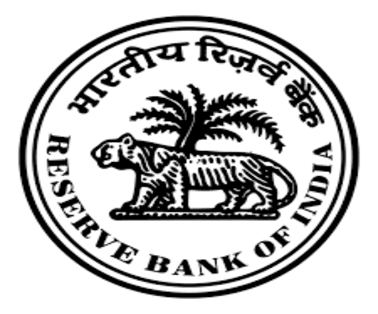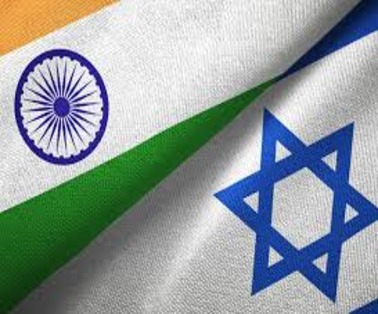The Reserve Bank of India (RBI) celebrated its 90th year recently
Key Highlights of RBI’s 90th Anniversary
- RBI governor Shaktikanta Das, Finance Minister Nirmala Sitharaman, and Prime Minister Narendra Modi delivered their keynote presentations.
- On the 90th anniversary of the RBI, PM Modi unveiled a commemorative coin.
- In his introductory remarks, Governor Shaktikanta Das said that the RBI has been working to strengthen the resilience of the Indian financial sector by continuously assessing new trends and implementing preventive measures.
- In his speech, Prime Minister Modi highlighted how UPI has grown to be a widely used platform.
- He said that throughout the next ten years, the central bank will need to concentrate on advancing digital transactions and financial inclusion.
About the RBI (Reserve Bank of India)
- The Reserve Bank of India was established on April 1, 1935 in accordance with the provisions of the Reserve Bank of India Act, 1934.
- RBI is India’s central banking institution, which controls the monetary policy of the Indian rupee.
- The Central Office of the Reserve Bank was initially established in Calcutta but was permanently moved to Mumbai in 1937. The Central Office is where the Governor sits and where policies are formulated.
- Though originally privately owned, since nationalization in 1949, the Reserve Bank is fully owned by the Government of India.
- RBI was set up based on the recommendations of Hilton Young Commission, which was appointed by Lord Reading, then viceroy of India.
Structure Of RBI
- The Reserve Bank’s affairs are governed by a central board of directors. The board is appointed by the Government of India in keeping with the Reserve Bank of India Act
- The directors are appointed/nominated for a period of four years.
Main Functions Of RBI
- The central bank issues and regulates currency notes.
- It keeps reserves with a view to securing monetary stability and is called banker to banks.
- The RBI plays a vital role in economic growth of the country and maintaining price stability.
- The RBI has been tasked to have a monetary policy framework to meet the challenges of the economy and to maintain price stability while keeping in mind the objective of growth.
- The RBI has targeted to keep the mid-term inflation at 4 four percent (+/- 2 percent).
- A six-member Monetary Policy Committee, headed by RBI Governor, decides the benchmark repo rate.
- RBI acts as a banker for both the central as well as state governments. It sells and purchases government securities on their behalf.
- Foreign Exchange Management Act (“FEMA”) envisages that RBI will have a key role in management of foreign exchange.
RBI Governor
- The executive head of RBI is Governor.
- The Governor is accompanied by 4 deputy governors.
- The First Governor of RBI was Sir Osborne Smith and the First Indian Governor of RBI was C D Deshmukh.
- The First woman Deputy Governor of RBI was K J Udeshi.
- The only Prime Minister who had been the Governor of RBI was Manmohan Singh.
- The current governor of RBI is Shaktikanta Das.
Powers of the RBI
- The RBI regulates and supervises public sector and private sector banks.
- The powers of RBI are wide-ranging and comprehensive to deal with various situations that may emerge in all banks.
- Under the provisions of the Banking Regulation Act, 1949, it can:
- Inspect the bank and its books and accounts.
- Give directions to secure the proper management of the bank.
- Direct the bank to initiate insolvency resolution process in respect of a default, under the provisions of Insolvency and Bankruptcy Code, 2016.
- Issue directions to banks for resolution of stressed assets.
- Give assistance to any bank by means of the grant of a loan or advance.
Major Initiatives By RBI
- Green Revolution (1960s-1970s): Supported agricultural growth through credit facilities and rural credit accessibility enhancements.
- Banks Nationalization (1969): Aimed at aligning banking sector objectives with national policy goals.
- Priority Sector Lending (1972): Ensures timely credit flow to key sectors of the economy.
- Economic Liberalization (1991): Opened up the economy to global markets, fostering market-oriented growth.
- Unified Payment Interface (UPI), 2016: Enabled seamless and instant transactions across India.
- Inflation Targeting Framework, 2016: Set inflation targets to guide monetary policy decisions.
- Bharat Bill Payment System (BBPS), 2019: Launched an integrated bill payment system for customer convenience.
- Aadhar-based eKYC (2019): Streamlined customer authentication processes for financial institutions.
- Emergency Credit Line Guarantee Scheme (ECLGS), 2020: Provided credit assistance to SMEs affected by the COVID-19 pandemic.
- Central Bank Digital Currency (2022): RBI is actively exploring the issuance of a CBDC known as e₹ (digital Rupee).
- Cryptocurrency Regulation (2022): RBI has maintained a consistent stance against cryptocurrencies, advocating for an outright ban on them (after China and El Salvador imposed the complete ban). In 2020, the Supreme Court of India removed the ban on cryptocurrencies imposed by RBI.
- Payment Vision 2025 Document (2023): The goals and vision of the RBI, are categorised in the Payments Vision 2025 documents into five anchor goalposts – Integrity, Inclusion, Innovation, Institutionalisation and Internationalisation
Conclusion
As the RBI enters its 91st year, its role as the custodian of India’s financial and monetary health remains more vital than ever. From managing inflation and fostering financial inclusion to spearheading digital innovation, the Reserve Bank of India continues to evolve with the nation’s needs.
To Download Monthly Current Affairs PDF Click here
Click here to get a free demo
Discover all about CLAT Exam



